Of all Britain's trees, one name conjures a greater sense of majesty and legend more than any other: the oak.
The oak tree is entwined within British history and culture, and plays a vital role in our natural history. But there is more than just a singular species.
There are two native species of oak in the UK – the English (or common) oak and the sessile oak – as well as several more introductions or ornamental varieties, including the holm oak, Turkey oak, cork oak and northern red oak.
In this guide, we take a closer look at this icon of the British countryside, exploring how long it takes an oak tree to grow, how to grow a tree from an acorn and how to identify several key species found in our countryside.
Want to know more about Britain's trees? Check out our guides to aspen trees, juniper trees and Christmas trees.
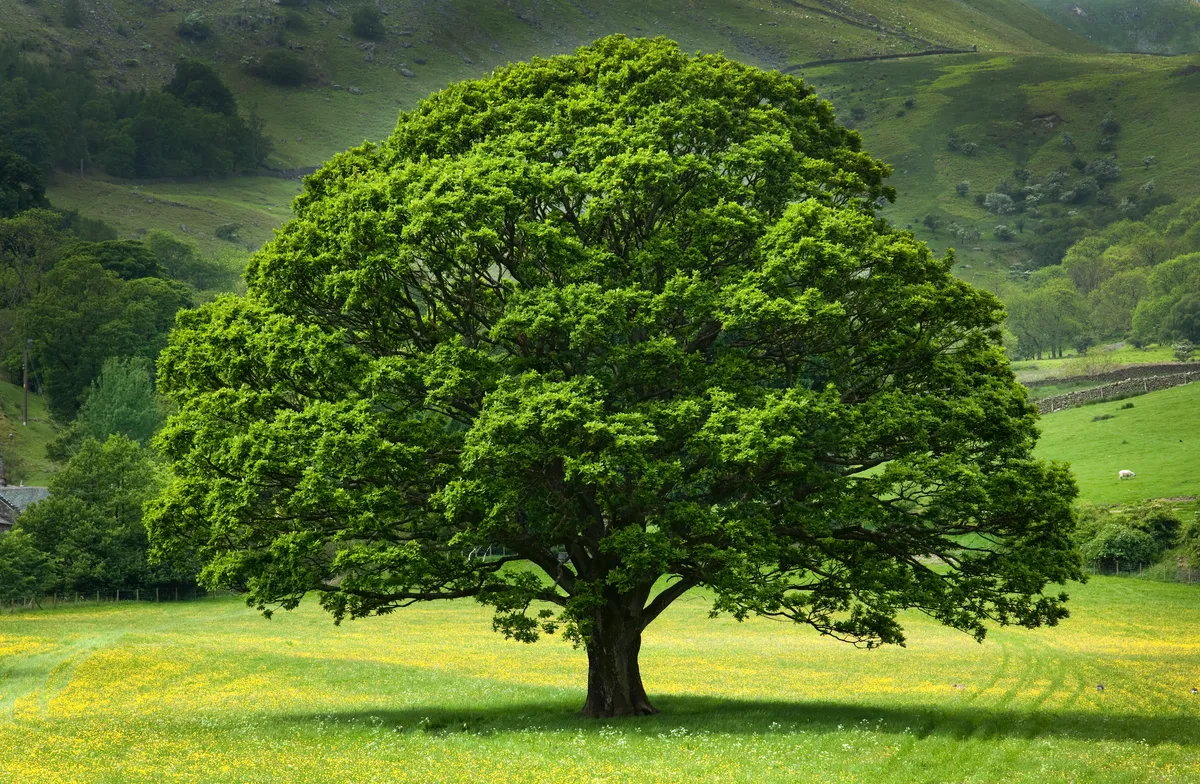
How long does it take for an oak tree to grow?
Oak trees are slow-growing. It can take several years for a tree to establish itself. Growth slows as the tree gets older, and after about 30–40 years most oak trees will have reached maturity and will be producing their own acorns.
Of course, growth rates and timelines vary depending on the species, weather conditions, competition with other plants and trees, and disease.
How tall do oak trees grow?
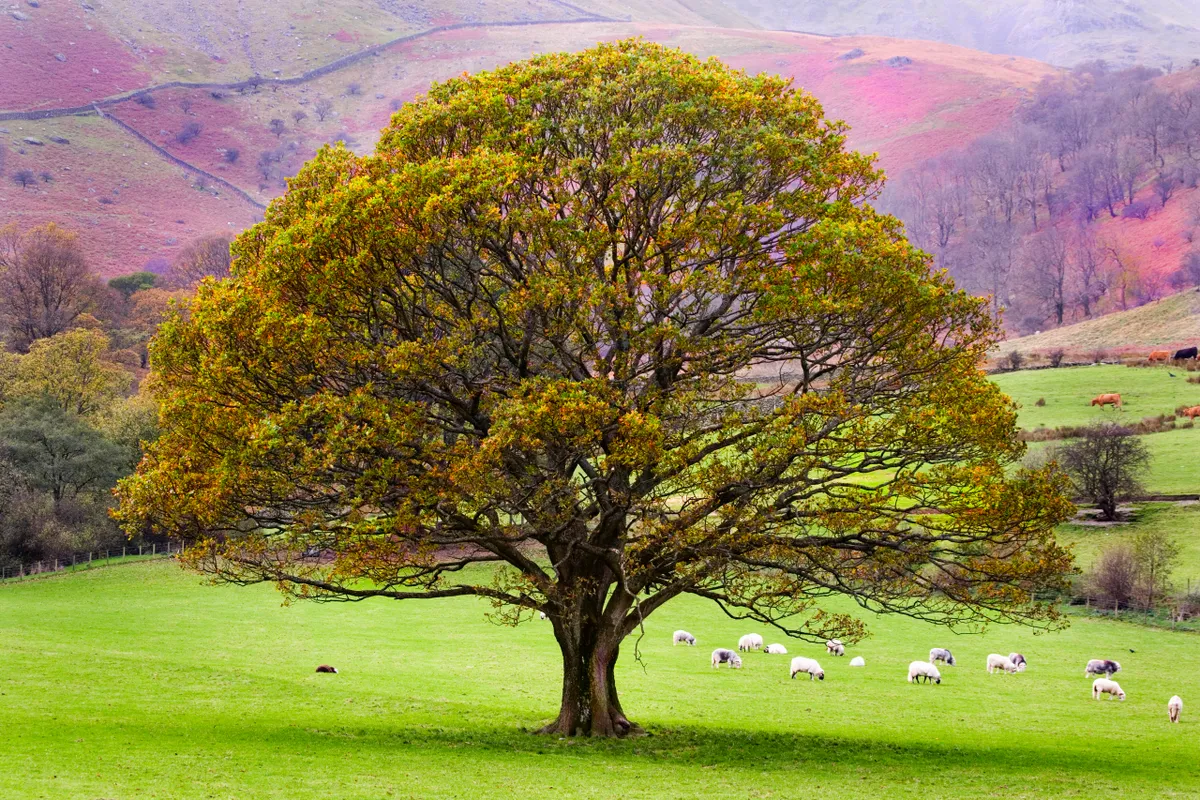
The maximum height of a mature oak tree depends on the species. The English or common oak can grow up to 20–40m tall. The sessile oak can also reach heights of up to 20–40m.
In 2012, an English oak in the grounds of Stourhead in Wiltshire was measured at a height of 40.4m (132.5ft), making it the UK's tallest oak tree.
What is the UK's oldest oak tree?
Determining the age of an oak can be difficult, but there are some specimens in the UK that are believed to be over 1,000 years old.
Contenders for the oldest oak tree in the UK include the Marton Oak in Cheshire (over 1,000 years old), the Bowthorpe Oak in Lincolnshire (over 1,000 years old), and the Big Belly Oak in Wiltshire (1,000–1,100 years old).
- Learn how to make a spinning top from acorns
How to grown an oak tree from an acorn?
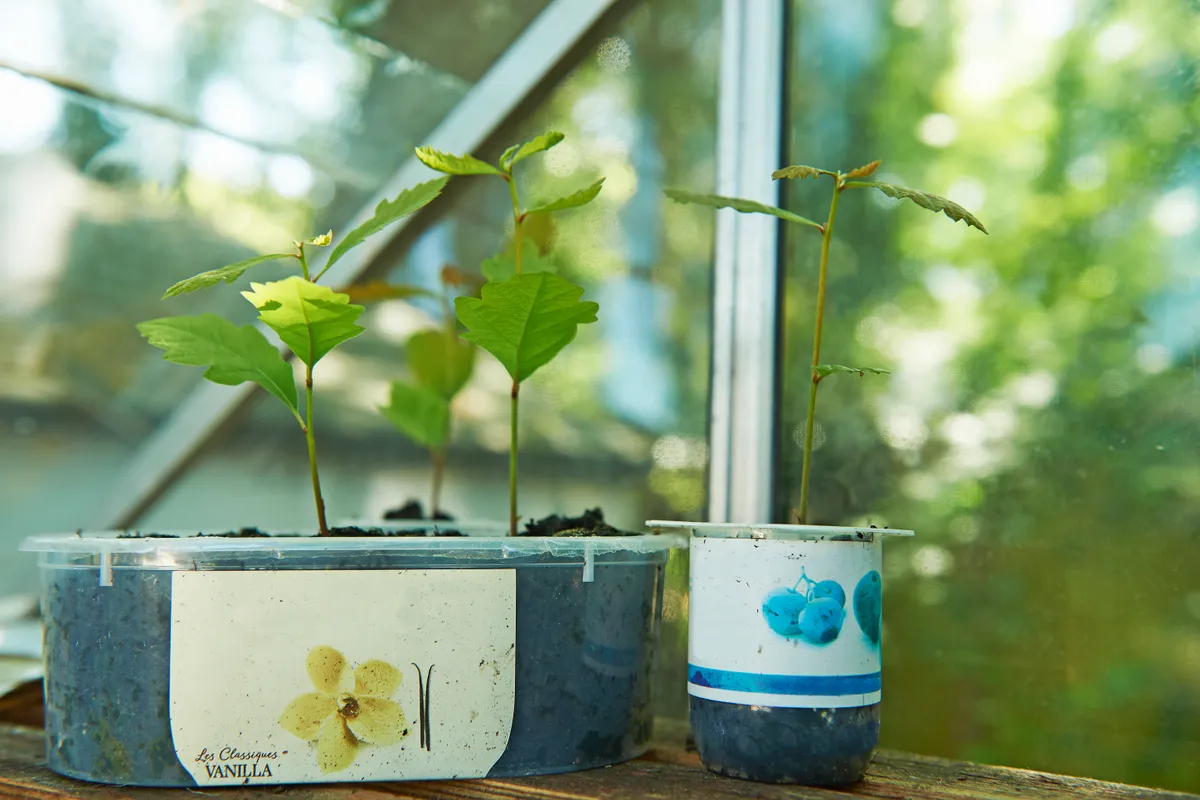
You can grow your own oak tree from an acorn. Gather a handful of fat, ripe, brown acorns from the ground and place each one in a small pot of peat-free compost and sand. Make sure the pointed end is facing upwards then cover with 2–3cm of compost.
Keep the containers in a cool place out of direct sunlight over autumn and winter and wait until spring. Hopefully they'll be starting to sprout, at which point you can begin to water them.
Once the seedlings are 25cm tall, move them to a slightly larger pot. Over the next one or two years the seedlings should strengthen. They are then ready to plant in the ground.
- Discover a more in-depth guide to growing oak trees from acorns.
Guide to Britain's native oak tree species
English or common oak, Quercus robur
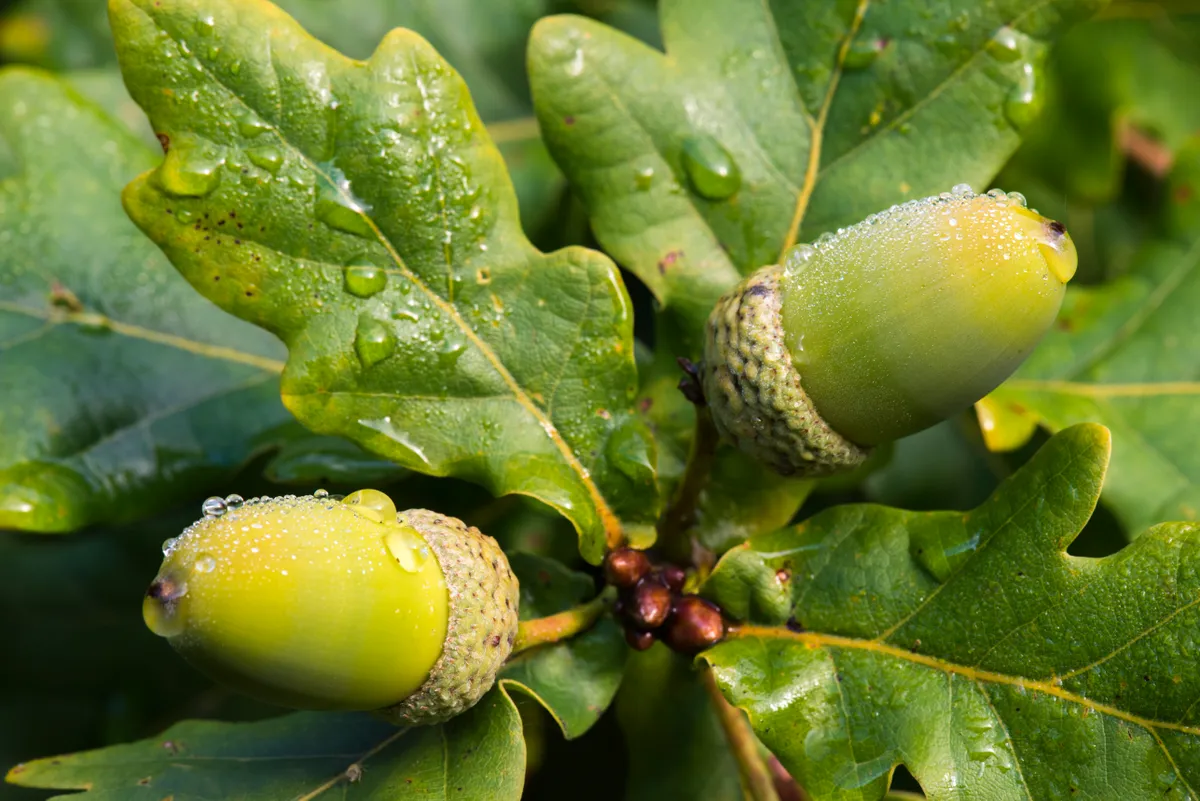
A single tree may live for almost 1,000 years and support more biodiversity than any other British plant. If given space, the common oak may grow as wide as it is tall, with weighty boughs and thick, almost scaly, bark.
The leaves have deep rounded lobes and no stalk.
Sessile oak, Quercus petraea
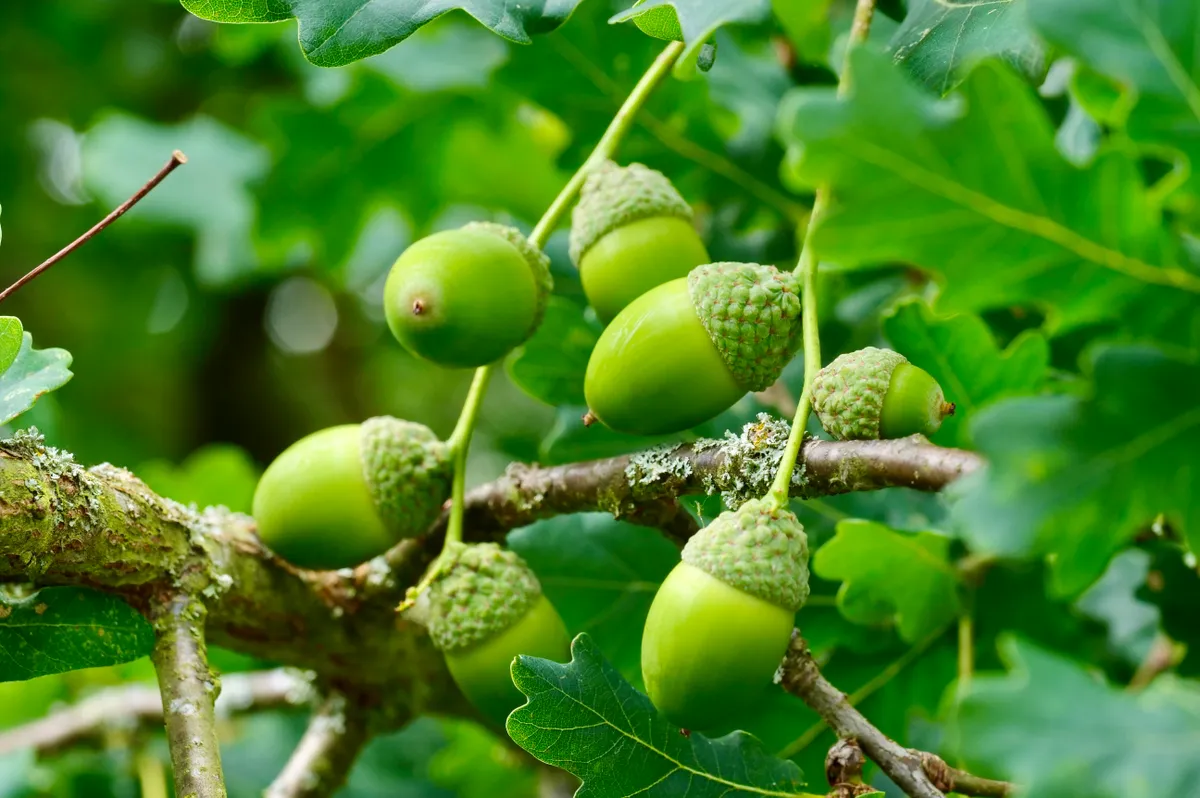
Also native to Britain, the sessile or durmast oak grows to a similar height as the common oak and although less common, is equally widespread. The leaves are less deeply lobed than the common and have short stalks, whereas the short, round acorns grow directly off the twigs.
Other species of oak you may spot in the UK
Holm oak, Quercus ilex
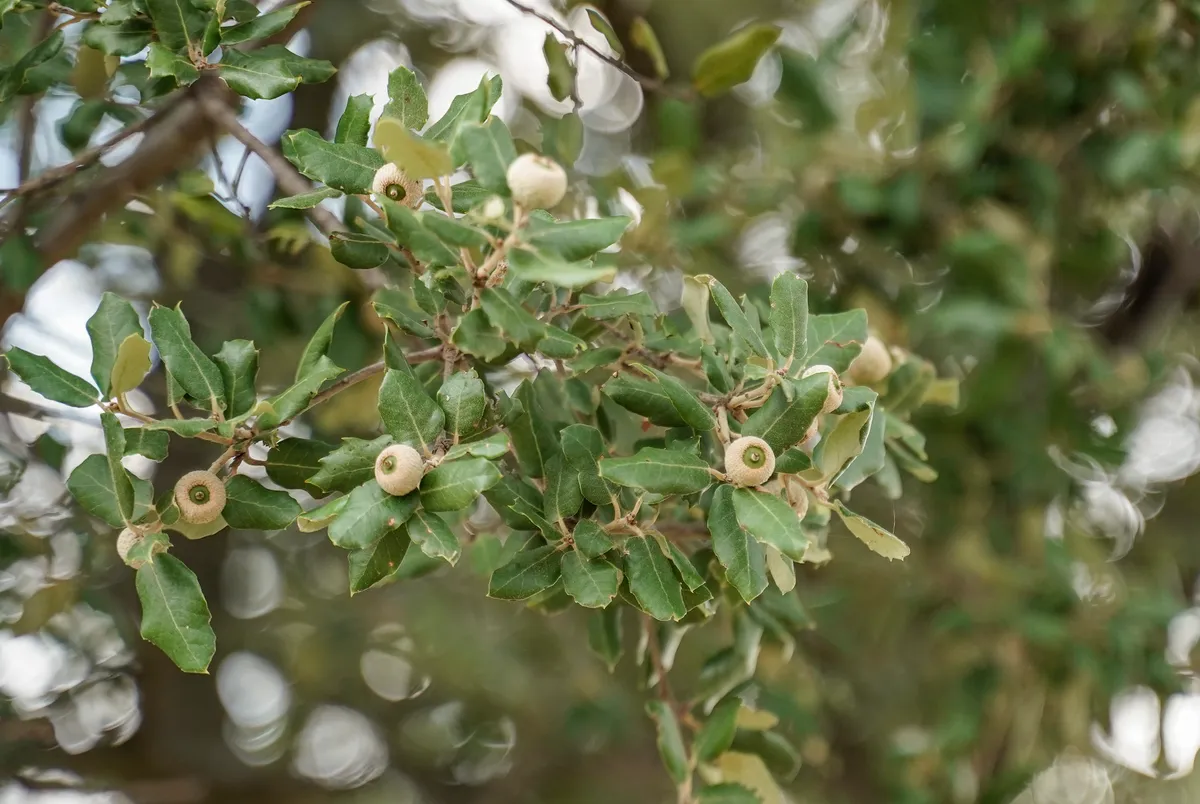
Native to much of the Mediterranean, the holm oak was introduced into Britain in the 16th century and is familiar in parks and gardens. The leaves are glossy, smooth-edged and evergreen, making them conspicuous in the winter. The holm oak is resistant to salt but not frost and thrives near the coast.
Turkey Oak, Quercus cerris
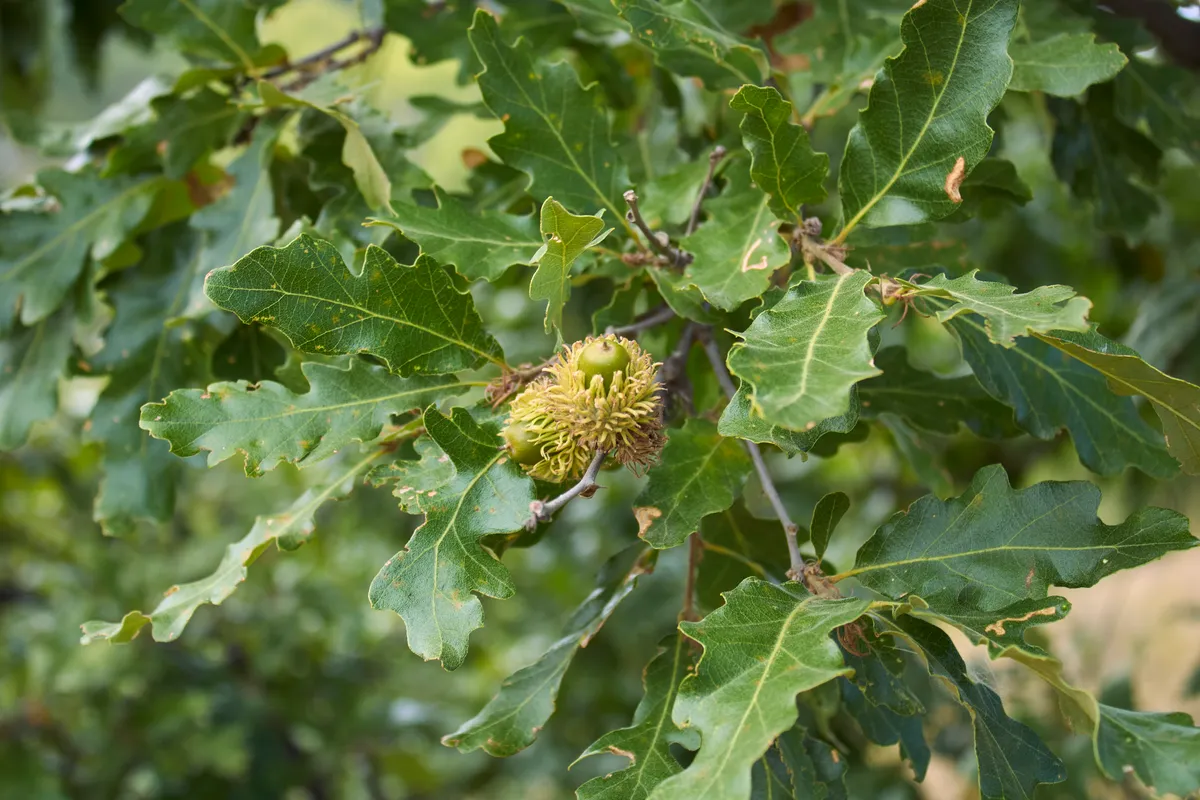
Introduced in the 18th century, the Turkey oak was native to the British Isles prior to the last Ice Age. It is relatively fast growing, with long, hardy and deeply cut leaves. The acorns are distinct in developing from hairy cups, while the bark is deep grey and often cracked.
Cork oak, Quercus suber
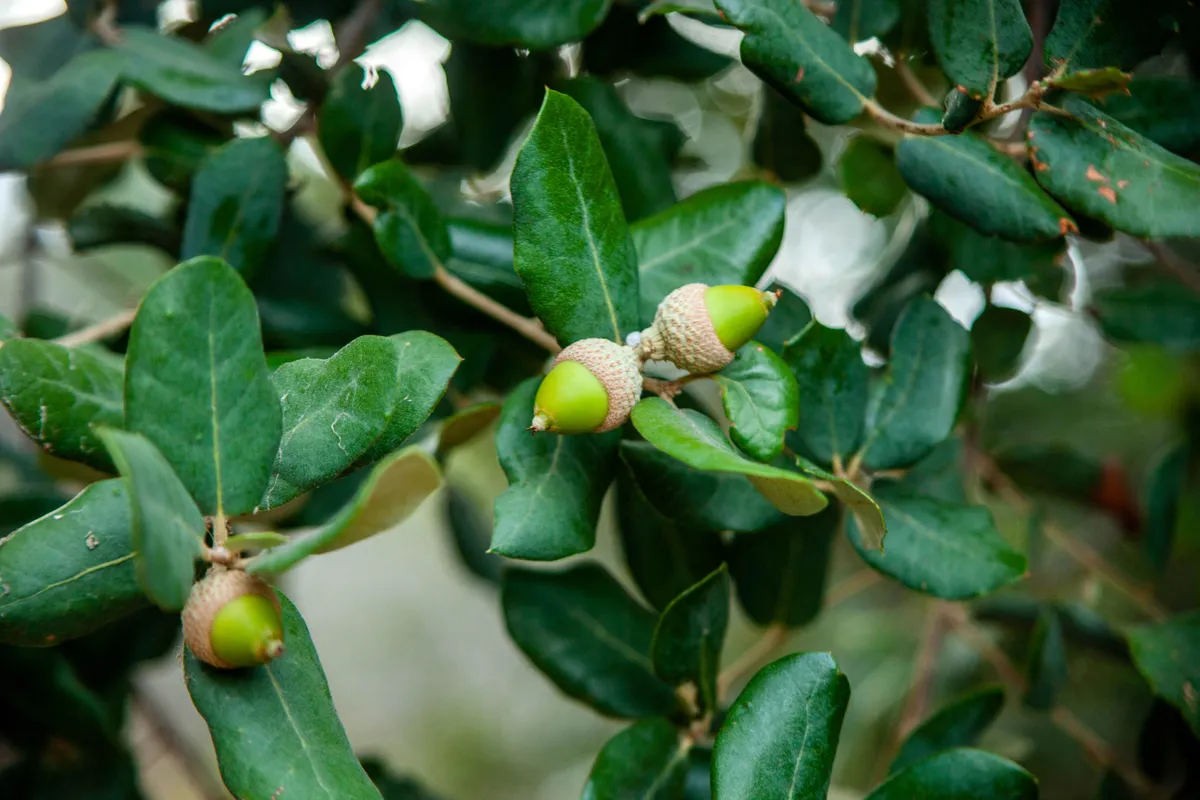
Another species introduced from southern Europe, the bark of the cork oak, as its name suggests, is used in commercial cork production. The evergreen leaves are similar in appearance to holly, with a shiny, veined upper surface and shallow ‘spiked’ edges. Most commonly found in south-west England.
Northern red oak, Quercus rubra
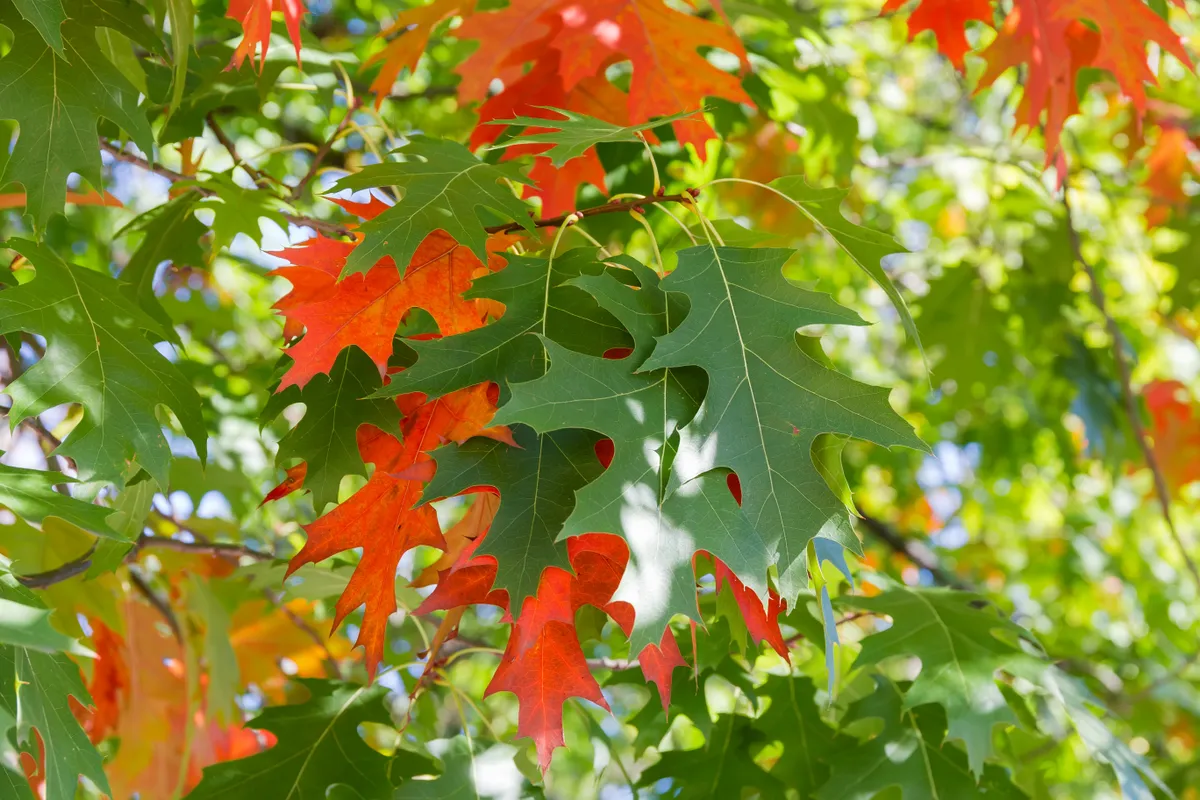
Native to the north-western United States, the northern red oak is now naturalised across much of Europe including the British Isles. A fast-growing tree with leaves that have pointed lobes and turn a deep reddish-brown in autumn, a quality that has led to their popularity within ornamental planting.
